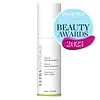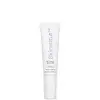What's inside
What's inside
 Key Ingredients
Key Ingredients

 Benefits
Benefits

 Concerns
Concerns

 Ingredients Side-by-side
Ingredients Side-by-side

Water
Skin ConditioningCoco-Caprylate/Caprate
EmollientDimethicone
EmollientGlycerin
HumectantPolysorbate 80
EmulsifyingHydroxyethyl Acrylate/Sodium Acryloyldimethyl Taurate Copolymer
Emulsion StabilisingBisabolol
MaskingStearyl Glycyrrhetinate
Skin ConditioningCetearyl Dimethicone Crosspolymer
Benzyl Alcohol
PerfumingJojoba Esters
EmollientButylene Glycol
HumectantBHT
AntioxidantSodium Hyaluronate
HumectantTocopheryl Acetate
AntioxidantHydroxyethylcellulose
Emulsion StabilisingPropanediol
SolventPolysorbate 20
EmulsifyingRetinol
Skin ConditioningSalicylic Acid
MaskingDisodium EDTA
Polysorbate 60
EmulsifyingSorbitan Isostearate
EmulsifyingClimbazole
AntimicrobialSodium Hydroxide
BufferingSodium Lactate
BufferingCarbomer
Emulsion StabilisingSorbic Acid
PreservativeDisodium Phosphate
BufferingPalmitoyl Tripeptide-5
Skin ConditioningXanthan Gum
EmulsifyingSodium Phosphate
BufferingSaccharide Isomerate
HumectantGlyceryl Caprylate
EmollientBHA
AntioxidantTocopherol
AntioxidantPalmitoyl Tripeptide-1
Skin ConditioningPalmitoyl Tetrapeptide-7
Skin ConditioningWater, Coco-Caprylate/Caprate, Dimethicone, Glycerin, Polysorbate 80, Hydroxyethyl Acrylate/Sodium Acryloyldimethyl Taurate Copolymer, Bisabolol, Stearyl Glycyrrhetinate, Cetearyl Dimethicone Crosspolymer, Benzyl Alcohol, Jojoba Esters, Butylene Glycol, BHT, Sodium Hyaluronate, Tocopheryl Acetate, Hydroxyethylcellulose, Propanediol, Polysorbate 20, Retinol, Salicylic Acid, Disodium EDTA, Polysorbate 60, Sorbitan Isostearate, Climbazole, Sodium Hydroxide, Sodium Lactate, Carbomer, Sorbic Acid, Disodium Phosphate, Palmitoyl Tripeptide-5, Xanthan Gum, Sodium Phosphate, Saccharide Isomerate, Glyceryl Caprylate, BHA, Tocopherol, Palmitoyl Tripeptide-1, Palmitoyl Tetrapeptide-7
Water
Skin ConditioningCyclopentasiloxane
EmollientGlycerin
HumectantPolysorbate 60
EmulsifyingPistacia Vera Seed Oil
Skin ConditioningEthoxydiglycol
HumectantHydrogenated Ethylhexyl Olivate
EmollientSodium Hyaluronate
HumectantTocopherol
AntioxidantHydrolyzed Vegetable Protein
Skin ConditioningHydroxyethyl Acrylate/Sodium Acryloyldimethyl Taurate Copolymer
Emulsion StabilisingSqualane
EmollientHydrogenated Olive Oil Unsaponifiables
EmollientDimethicone Crosspolymer
Emulsion StabilisingArginine
MaskingTrehalose
HumectantPhenoxyethanol
PreservativeCaprylyl Glycol
EmollientDisodium Adenosine Triphosphate
Skin ConditioningMannitol
HumectantPyridoxine Hcl
Skin ConditioningRna
Skin ConditioningMoringa Oleifera Leaf Extract
Skin ConditioningParfum
MaskingAlcohol
AntimicrobialHistidine Hcl
Skin ConditioningEpilobium Angustifolium Leaf Extract
Skin ConditioningDipeptide Diaminobutyroyl Benzylamide Diacetate
Skin ConditioningTetrahydropiperine
Skin ConditioningRetinol
Skin ConditioningPhenylalanine
MaskingPanthenol
Skin ConditioningCitric Acid
BufferingSorbic Acid
PreservativeSodium Hydroxide
BufferingRuscus Aculeatus Root Extract
AstringentCentella Asiatica Extract
CleansingCalendula Officinalis Flower Extract
MaskingAesculus Hippocastanum Extract
AntioxidantLeontopodium Alpinum Flower Extract
Skin ConditioningTyrosine
MaskingSodium Benzoate
MaskingHeptane
SolventBHT
AntioxidantPotassium Sorbate
PreservativeAmmonium Glycyrrhizate
MaskingAllyl Methacrylates Crosspolymer
Emulsion StabilisingCitronellol
PerfumingGeraniol
PerfumingLinalool
PerfumingWater, Cyclopentasiloxane, Glycerin, Polysorbate 60, Pistacia Vera Seed Oil, Ethoxydiglycol, Hydrogenated Ethylhexyl Olivate, Sodium Hyaluronate, Tocopherol, Hydrolyzed Vegetable Protein, Hydroxyethyl Acrylate/Sodium Acryloyldimethyl Taurate Copolymer, Squalane, Hydrogenated Olive Oil Unsaponifiables, Dimethicone Crosspolymer, Arginine, Trehalose, Phenoxyethanol, Caprylyl Glycol, Disodium Adenosine Triphosphate, Mannitol, Pyridoxine Hcl, Rna, Moringa Oleifera Leaf Extract, Parfum, Alcohol, Histidine Hcl, Epilobium Angustifolium Leaf Extract, Dipeptide Diaminobutyroyl Benzylamide Diacetate, Tetrahydropiperine, Retinol, Phenylalanine, Panthenol, Citric Acid, Sorbic Acid, Sodium Hydroxide, Ruscus Aculeatus Root Extract, Centella Asiatica Extract, Calendula Officinalis Flower Extract, Aesculus Hippocastanum Extract, Leontopodium Alpinum Flower Extract, Tyrosine, Sodium Benzoate, Heptane, BHT, Potassium Sorbate, Ammonium Glycyrrhizate, Allyl Methacrylates Crosspolymer, Citronellol, Geraniol, Linalool
Ingredients Explained
These ingredients are found in both products.
Ingredients higher up in an ingredient list are typically present in a larger amount.
BHT is a synthetic antioxidant and preservative.
As an antioxidant, it helps your body fight off free-radicals. Free-radicals are molecules that may damage your skin cells.
As a preservative, it is used to stabilize products and prevent them from degrading. Specifically, BHT prevents degradation from oxidation.
The concerns related to BHT come from oral studies; this ingredient is currently allowed for use by both the FDA and EU.
However, it was recently restricted for use in the UK as of April 2024.
Learn more about BHTGlycerin is already naturally found in your skin. It helps moisturize and protect your skin.
A study from 2016 found glycerin to be more effective as a humectant than AHAs and hyaluronic acid.
As a humectant, it helps the skin stay hydrated by pulling moisture to your skin. The low molecular weight of glycerin allows it to pull moisture into the deeper layers of your skin.
Hydrated skin improves your skin barrier; Your skin barrier helps protect against irritants and bacteria.
Glycerin has also been found to have antimicrobial and antiviral properties. Due to these properties, glycerin is often used in wound and burn treatments.
In cosmetics, glycerin is usually derived from plants such as soybean or palm. However, it can also be sourced from animals, such as tallow or animal fat.
This ingredient is organic, colorless, odorless, and non-toxic.
Glycerin is the name for this ingredient in American English. British English uses Glycerol/Glycerine.
Learn more about GlycerinThis is a synthetic polymer. It helps improve the texture of products by adding thickness and gel-like feel.
It is also an emulsifer, meaning it prevents ingredients such as oil and water from separating. It also helps evenly disperse other ingredients.
Polysorbate 60 is used to help stabilize products. It is a surfactant and emulsifier. These properties help keep ingredients together in a product. Surfactants help reduce surface tension between ingredients with different states, such as liquids and solids. Emulsifiers help prevent oils and waters from separating.
Polysorbate 60 is sorbitol-based and created from the ethoxylation of sorbitan. Ethoxylation is a chemical reaction used to add ethylene oxide. Sorbitan is a the dehydrated version of sorbitol, a sugar found in fruits.
In this case, the 60 comes from reacting 60 units of ethylene oxide with sorbitan.
Polysorbates are commonly used in medicine and foods.
Learn more about Polysorbate 60Retinol is a gold-standard ingredient for anti-aging. It is a form of Vitamin A and belongs to the class of retinoids that also includes tretinoin.
Why is retinol famous?
It has the most scientific studies backing up its skin benefits out of all the non-prescription ingredients.
Retinol is proven to:
This is why retinol is effective at removing wrinkles, fading dark spots, treating acne, and reducing the appearance of pores.
Studies show retinol is less effective when exposed to UV. Be sure to look for appropriate packaging to keep your retinol potent (similar to Vitamin C).
Using retinol or any retinoids will increase sun-sensitivity in the first few months. Though studies show retinoids increase your skin's natural SPF with continuous use, it is best to always wear sunscreen and sun-protection.
We recommend speaking with a medical professional about using this ingredient during pregnancy.
Retinol may cause irritation in some people, so be sure to patch test. Experts recommend 'ramping up' retinol use: start using this ingredient once a week and work up to using it daily.
Read about Tretinoin
Learn more about RetinolSodium Hyaluronate is hyaluronic acid's salt form. It is commonly derived from the sodium salt of hyaluronic acid.
Like hyaluronic acid, it is great at holding water and acts as a humectant. This makes it a great skin hydrating ingredient.
Sodium Hyaluronate is naturally occurring in our bodies and is mostly found in eye fluid and joints.
These are some other common types of Hyaluronic Acid:
Learn more about Sodium HyaluronateSodium Hydroxide is also known as lye or caustic soda. It is used to adjust the pH of products; many ingredients require a specific pH to be effective.
In small amounts, sodium hydroxide is considered safe to use. However, large amounts may cause chemical burns due to its high alkaline.
Your skin has a natural pH and acid mantle. This acid mantle helps prevent harmful bacteria from breaking through. The acid mantle also helps keep your skin hydrated.
"Alkaline" refers to a high pH level. A low pH level would be considered acidic.
Learn more about Sodium HydroxideSorbic Acid is a preservative. It is the most commonly used food preservative in the world.
Sorbic Acid is a natural antibiotic and highly effective at preventing the growth of fungus. It is less effective against bacteria.
Potassium Sorbate, another commonly-used preservative, is the potassium salt of Sorbic Acid.
Sorbic Acid may worsen eczema. We recommend speaking with a professional if you have any concerns.
Potassium sorbate and sorbic acid can be found in baked goods, cheeses, dried meats, dried fruit, ice cream, pickles, wine, yogurt, and more.
Learn more about Sorbic AcidTocopherol (also known as Vitamin E) is a common antioxidant used to help protect the skin from free-radicals and strengthen the skin barrier. It's also fat soluble - this means our skin is great at absorbing it.
Vitamin E also helps keep your natural skin lipids healthy. Your lipid skin barrier naturally consists of lipids, ceramides, and fatty acids. Vitamin E offers extra protection for your skin’s lipid barrier, keeping your skin healthy and nourished.
Another benefit is a bit of UV protection. Vitamin E helps reduce the damage caused by UVB rays. (It should not replace your sunscreen). Combining it with Vitamin C can decrease sunburned cells and hyperpigmentation after UV exposure.
You might have noticed Vitamin E + C often paired together. This is because it is great at stabilizing Vitamin C. Using the two together helps increase the effectiveness of both ingredients.
There are often claims that Vitamin E can reduce/prevent scarring, but these claims haven't been confirmed by scientific research.
Learn more about TocopherolWater. It's the most common cosmetic ingredient of all. You'll usually see it at the top of ingredient lists, meaning that it makes up the largest part of the product.
So why is it so popular? Water most often acts as a solvent - this means that it helps dissolve other ingredients into the formulation.
You'll also recognize water as that liquid we all need to stay alive. If you see this, drink a glass of water. Stay hydrated!
Learn more about Water